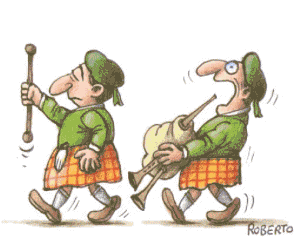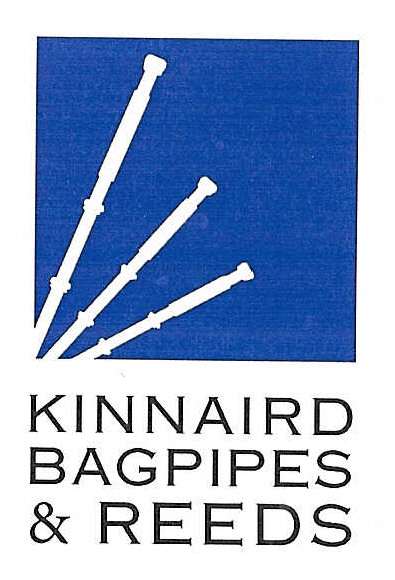|
|
|
Kinnaird Bagpipes Newsletter |
August 2011 | |
|
Greetings!
Last month's survey Question:
What do you spend most of your practice time on?
Practicing Tunes you already know- 17% Learning New Tunes 5% Combination of the two 75%
This month's survey question:
When at events, do you take part in solo competitions? If so what is your motivation for competing in solos?
|
|
|
News

SUMMER CONTEST!!

Show us your Instakilts!
Only a couple of weeks left to send us your Instakilt photos. You can email us or post them on our Facebook Page.
All photos submitted will be posted for others to vote on. Some have already been posted, so start voting!! The one with the most votes will win a Gift Certificate!
|
|
Video Clip
This clip is a Behind the Scenes look at McCallum Bagpipes, one of our suppliers of Pipes, Practice Chanters, Hose, and more!
Note that about 5:20 into the video Willie McCallum is discussing the McC2 Chanter and you can see that he is using a
Piper's Pal Reed Protector on his chanter!
Check out our selection of McCallum Bagpipes. |
|
|
Featured Article

Ivory & Pipes
Elephant Ivory mounts, ferrules and ring caps were traditionally used on bagpipes for hundreds of years. However, from 1979-1989, the population of African elephants declined from 1.3 million to 600,000. As many as 36,000 elephants are poached each year for their ivory. Asian elephant numbers are a fraction of what they used to be and are close to extinction in several areas. In 1989, the CITES treaty made it illegal to buy, sell or trade Asian elephant ivory after 1976 and African elephant ivory after 1989. Anything more than 100 years old that has not been reworked is considered "antique".
Some bagpipe manufacturers, like MacLellan bagpipes, still have access to pre-CITES ivory. For those who don't, there are other options available to get the look of ivory on their bagpipes. Mammoth ivory is very similar to elephant ivory except that it is slightly darker in color. It still has the Schreger lines of elephant ivory. Large quantities of mammoths have been found frozen in the ice in Russia, Siberia and Alaska. Since they have been extinct for over 10,000 years, they are not an endangered species like the elephants, so it is completely legal to import and export. Kron and Gellaitry Bagpipes use mammoth ivory on some of their pipes.
Another alternative is Imitation ivory. It can be manufactured from many products like cellulose nitrate or casein. It is used by McCallum, Wallace and Naill among others. Some companies, like Dunbar, are able to engrave their specially made delrin imitation ivory. Vegetable ivory, made from the Tagua or "Phytelphas" palm tree, is another alternative, though not as common. Phytelphas, which literally means "elephant plant", produces large fruits that have ivory-like nuts.
If you do have bagpipes with real ivory and plan to travel with them, make sure to have proper documentation for importing and exporting to and from each country to you are going to, including your origin. You will likely need a CITES document stating the origin and year of harvest of the ivory. |
|
Scottish Humor
When Sanders MacGillivray came back from his first trip to London, everyone in the village was keen to find out how it went.
"Did you like it?"
"Oh, it was no' bad. There was just one thing wrong. The people in the hotel just would not go to bed. They were outside my room in the corridor shouting and banging till 3 o'clock in the morning."
"What did you do?"
"Och, I just kept on playing my bagpipes."

|
|
|
|
Recent Reviews
Pipes Ready! DVD
-"This DVD/VHS shows all of the maintenance procedures required to have your bagpipe operating at its optimal performance level. Essential for beginners; quit blaming yourself for not being able to blow well, when it is really a badly maintained bagpipe that is causing all of your grief!
This video is great for you parents as well so you have an understanding of the care and attention your child should undertake with this instrument."
-"A great instructional video for beginners and intermediates. It contains all the "what you should know about the pipes" & "how-to" to get you going and perform better. It presents it with a humorous twist. Easy to watch, it's not like a one-time movie, but a reference for a pipe band that you will use often." |
|
|
Sincerely,

Rauncie Kinnaird
Kinnaird Bagpipes
923 Emmeline Terrace
Saskatoon, SK
S7J 5G7
Ph: 1-877-249-2939
Fax: 1-306-249-2933
email: sales@kinnairdbagpipes.com |
|
|
|
|